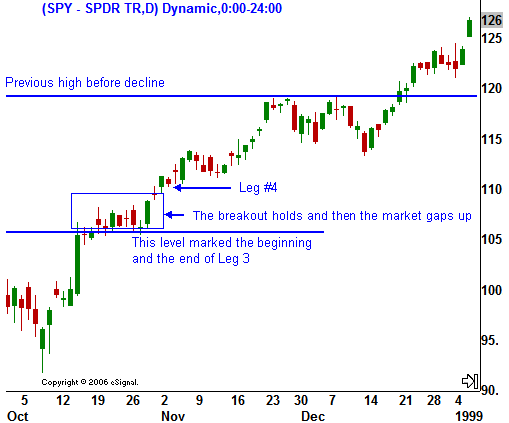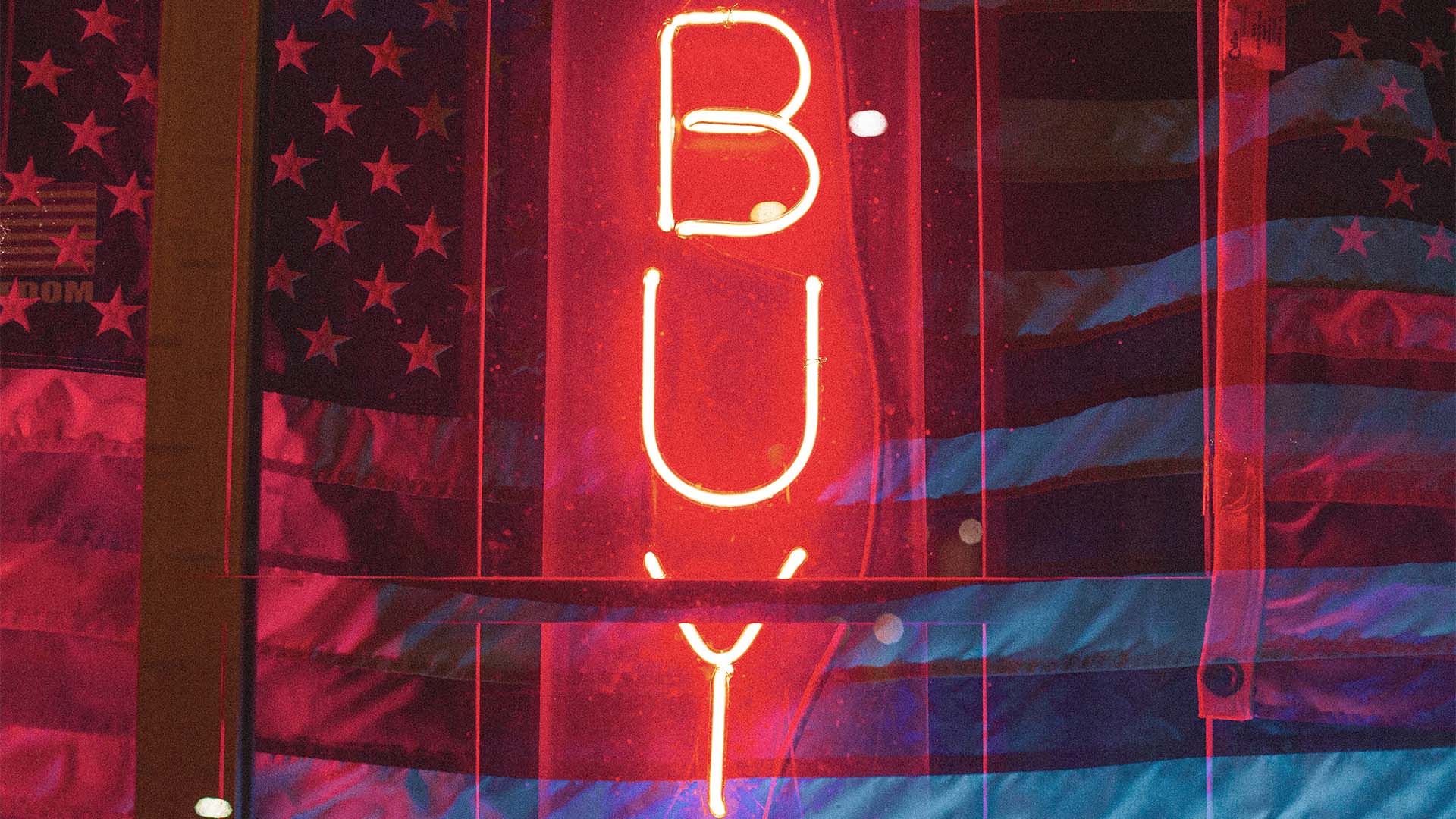In Leg 4, the market tested a support level and it failed to breakdown. As it rallied off of that low we sold naked puts on stocks that we like. This allowed us to take advantage of high implied volatilities and we were able to distance ourselves from the action in case the market had another decline. We also exited our remaining bearish positions. As the market broke above the SPY 105 level (it defined the beginning of the third leg) we shifted to an outright bullish bias. The tactic at this stage is to find the strongest stocks and to place buy-stop orders just above a minor resistance level. First, let’s take a look at the SPY chart.
.
.
.
.
You can see that the market clearly broke out above the SPY 105 level. It was grinding along, testing that level for a number of days. Each time it was not able to break below it. Eventually, the market gapped higher, marking the next and final phase of this move. Remember, “V” bottoms are simply and over-bought correction. They are swift and steep and all of the macro conditions are still conducive for a market rally. All of the longer term trend lines should still be in place. At this stage, we want to take advantage of the ensuing recovery rally.
1. Find stocks that have demonstrated relative strength. Identify a minor resistance level that the stock would need to penetrate an order for you to become bullish.
2. Place good-till-cancel (GTC) buy-stop orders to purchase the stock. The snap back rallies are often fast and furious because short sellers are trying to cover. When the move materializes, you won’t have time to place all of your orders. If the market fails to follow through and it heads back down, your stock orders will not be triggered and you will not lose money.
3. We are buying the stock and not the calls because we want a 1:1 price relationship. The implied volatilities of the options are very high during market sell offs and the deltas on any calls that you would buy will be less than one. As the market rallies, the implied volatilities decline and your calls will not move the way you want them to. They will be fighting a drop in implied volatility.
4. Continue to hold the shares of stock as long as the market momentum remains intact. As it starts to slow down, start scaling out of your long stock positions.
5. Now that the danger has passed and the market is back on track, the implied volatilities will decline and you can purchase call options.
6. Once you have purchased call options, you are participating in the market rally while limiting your downside risk. If the market is transitioning there may be additional pullbacks and the long call positions will give you peace of mind. If the market rallies above the high established by the beginning of the “V” decline, you can be fairly certain that all is well and the rally will continue. In this case, that level was SPY 118.
You can draw a line across the SPY 118 level. As long as the market is able to eclipse that level and maintain that support, you should stay bullish. The key point to remember about “V” bottoms is that they only last for a few weeks or a few months – they don’t drag on for extended periods of time. “V” bottoms also follow periods where the market has made nice gains. All of the macro conditions and major trend lines need to stay in place.










